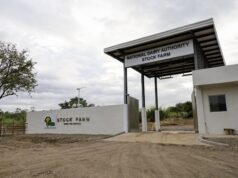President Duterte admitted on Tuesday, even as he denied having created the vigilante group: “I did not do that. I do not need that…I will not create a DDS…”
The President claimed the DDS was created to fight the Special Partisan Unit (Sparu), a hit squad of Guerilla Front 55 of the New People’s Army Southern Mindanao Regional Committee that operated in the hinterlands of Bukidnon and Davao del Norte provinces.
Notwithstanding my aversion to extrajudicial killings, I find reason to believe the President. Having had our similar experiences with rightwing death squads unleashed against urban partisan units of the NPA euphemized as “sparrows.”
Yes, death squads were never exclusive to Davao. They were, as a matter of course, integral elements of the anti-insurgency campaign.
Here’s one article on our version of the DDS which I wrote for People’s Journal Tonight and the Associated Press as a case in point:
A ‘tooth and nail’ drive against insurgency
SAN FERNANDO, Pampanga (Feb. 17, 1988) – The balance of terror in the insurgency campaign in Pampanga has assumed an “expanded dimension” with the formation Saturday of the Angelino Simbulan Brigade (ASB) here.
The anti-communist group named after the San Fernando deputy police station commander killed by suspected New People’s Army hitmen has vowed to fi ght insurgents “tooth and nail.”
The ASB vowed to hunt down communist rebels in retaliation for the “heavy burden of taxation” the rebels imposed on residents here and for the spate of killings last week attributed to the NPA.
With the entry of the ASB into the insurgency campaign, a war of attrition rivalling in scope of terror that of the pre-martial law “Beatles” and “Monkees” now looms in the province.
Pampanga residents still vividly remember the vise grip of terror in the mid-60s amid the war between the Huk death squads euphemistically called “Beatles” (after the Fab 4 from England) and the paramilitary right-wing liquidation group called “Monkees” (the American band formed to compete with the Beatles).
An intensified conflict in Pampanga is expected with the formation of the ASB which came in the wake of the reactivation of the Hukbong Magpapalaya ng Bayan (HMB) to contest the “primacy of the NPA” in the countryside.
The presence of the Mariano Garcia Brigade, local counterpart of the Alex Boncayao Brigade, is another factor seen to escalate armed confl ict in the province.
“The resultant situation in the province may be paralleled with that of Lebanon’s rather than Nicaragua’s,” said a political science professor who requested anonymity. “The Lebanese Army, the Christian phalangists, the Shi’ite fundamentalists and the Abu Nidal group have their counterparts in the government forces, the Huks, the NPA and its sparrows, and now the ASB.”
These developments have also dissolved the “fixed spheres of infl uence” among the “non-legal contending forces.”
While NPA influence is pervasive throughout the province, the eastern towns of Candaba, San Luis and Arayat are known lairs of the HMB.
“Pampanga is now fair game to all these forces,” said a former military man who, however, expressed the opinion that government troops remain on top of the situation.
And the orgiastic killings quickly followed – of urban poor and cause-oriented group leaders, a human rights lawyer, a doctor, the city engineer, no less than six policemen, informers, culminating in May-June 1988 with some 40 fatalities in that period alone.
Our record of the times – in news clippings – I turned into an attempt at “journalistic novel” writing in a slim volume titled Brigada .45 summarized in the blurb:
Hagkis ng kaliwa, Bigwas ng kanan. Low Intensity Conflict. Mula Fields Avenue, ang pamosong kalsada ng kamunduhan, hanggang Nepo Mart, ang sentro ng kalakal; mula Area, ang palengke ng laman, hanggang sa mismong simbahan, walang piniling larangan ang digmaan sa kalunsuran, nanalasa pa’t nandamay sa mga karatig-bayan. Ito ang Lungsod ng Angeles sa huling tatlong taon ng dekada ‘80. Dito inukit ang maiksi nguni’t madugong kasaysayan ng Brigada Mariano Garcia.
Low Intensity Conflict. The then-novel approach to insurgency applied as much in Angeles City as in Davao City.
The ASB and the DDS, straight out of a purported LIC Manual at that time: “… para-military or vigilante groups are formed, indoctrinated and armed to fight the insurgents. This is to ‘civilianize’ actual military operations, such as in instances of assassinations, breaking of anti-government demonstrations, infiltration of unions and militant organizations. We have greater leeway in the use of vigilantes as they are neither bound by any chain of command other than their handlers nor governed by any rules of engagement. No courts martial for them.
“Civilianizing the conflict likewise involves tapping private groups for moral support and even resource-sharing, as well as manpower… Practical shooters’ clubs and other weekend warriors, properly indoctrinated, make ready and willing vigilante forces.”
Yeah, anyone can cry havoc, and it does not take a Duterte to unleash the dogs of war.




